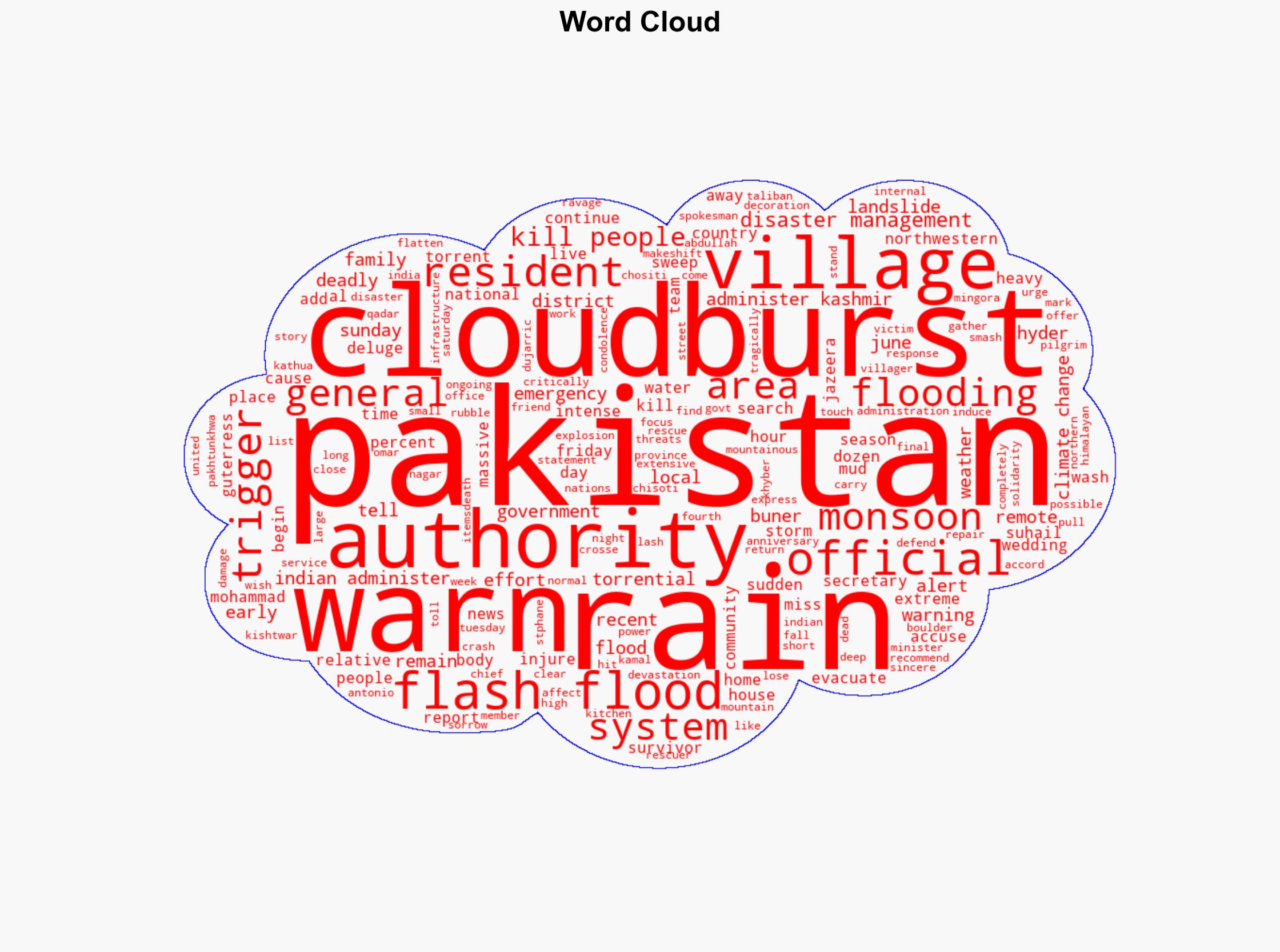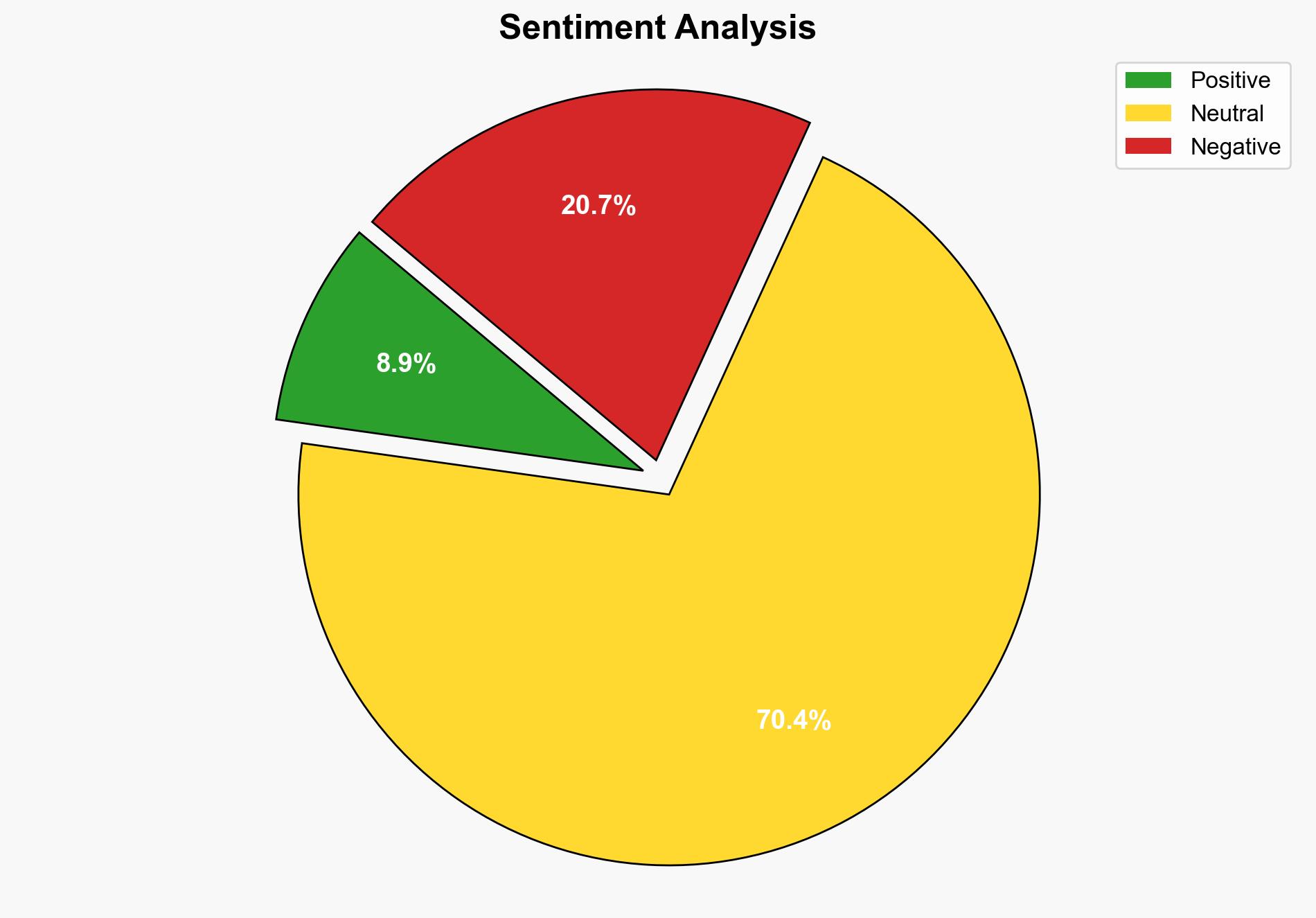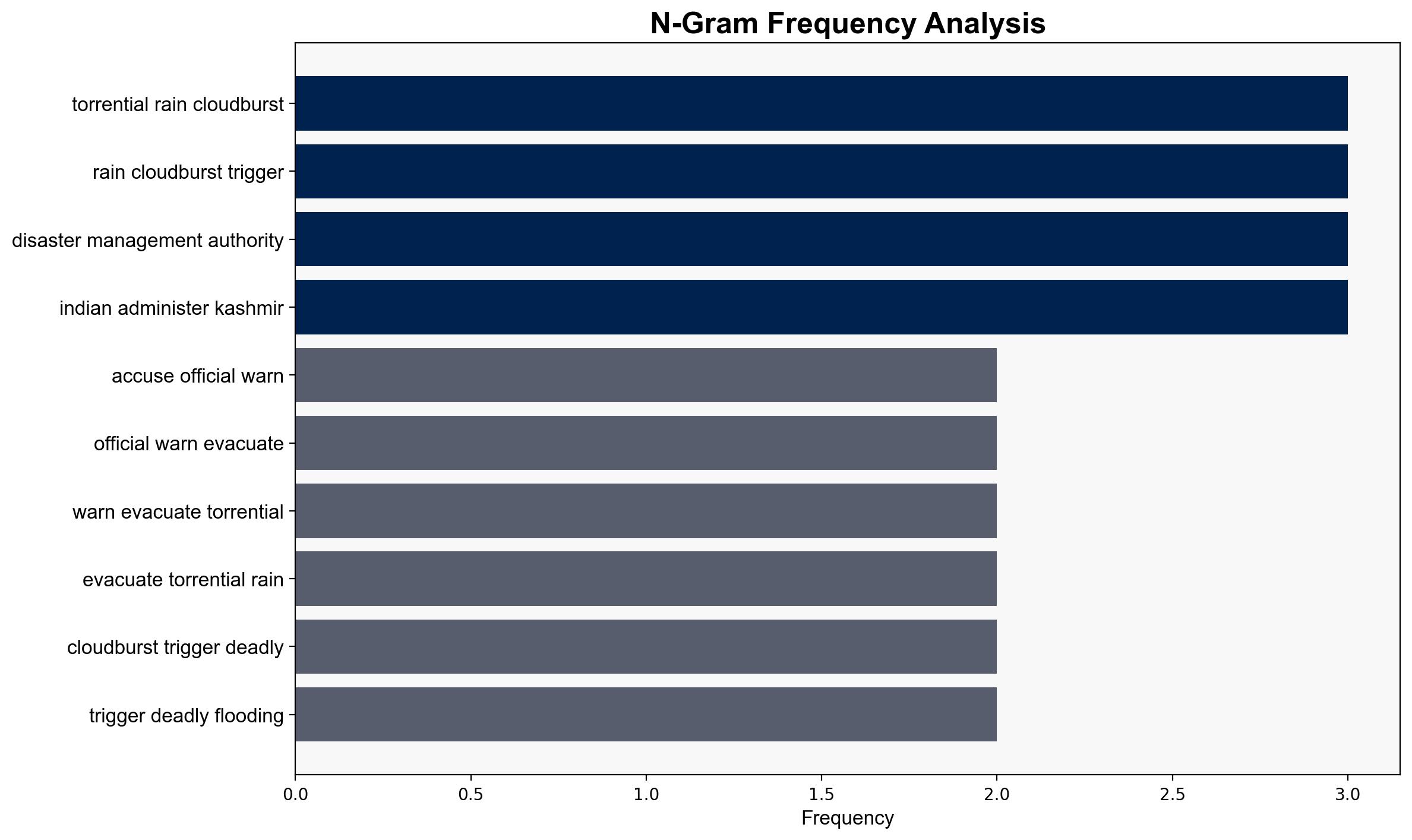At least 337 killed in Pakistan floods govt defends emergency response – Al Jazeera English
Published on: 2025-08-17
Intelligence Report: At least 337 killed in Pakistan floods govt defends emergency response – Al Jazeera English
1. BLUF (Bottom Line Up Front)
The most supported hypothesis is that the Pakistani government’s emergency response was inadequate due to systemic issues and lack of infrastructure, rather than solely due to unforeseen natural events. Confidence level: Moderate. Recommended action: Enhance early warning systems and infrastructure resilience, and improve community engagement in disaster preparedness.
2. Competing Hypotheses
1. **Hypothesis A**: The Pakistani government’s emergency response was inadequate due to systemic issues, including poor infrastructure, lack of effective early warning systems, and insufficient community engagement.
2. **Hypothesis B**: The emergency response was adequate given the unprecedented nature of the natural disaster, with failures primarily due to the unpredictability and severity of the weather events.
Using ACH 2.0, Hypothesis A is better supported by evidence such as resident accusations of inadequate warnings and the systemic issues highlighted by the National Disaster Management Authority. Hypothesis B is weakened by reports of preventable casualties and the lack of timely warnings.
3. Key Assumptions and Red Flags
– **Assumptions**: Hypothesis A assumes systemic issues are the primary cause of the inadequate response, while Hypothesis B assumes the natural disaster’s severity was unforeseeable.
– **Red Flags**: Inconsistent data on the effectiveness of the early warning systems and potential bias in government statements defending the response.
– **Blind Spots**: Lack of detailed information on the specific measures taken by the government prior to the floods.
4. Implications and Strategic Risks
– **Patterns**: Increasing frequency and severity of climate-induced disasters in the region.
– **Cascading Threats**: Potential for increased political instability and public dissatisfaction with government responses.
– **Escalation Scenarios**: Failure to address systemic issues could lead to more severe disasters and loss of life in the future.
– **Economic Impact**: Significant infrastructure damage could strain economic resources and recovery efforts.
5. Recommendations and Outlook
- Invest in robust early warning systems and infrastructure improvements to mitigate future risks.
- Enhance community engagement and education on disaster preparedness.
- Scenario-based Projections:
- Best Case: Implementation of effective disaster management reforms reduces future casualties and damage.
- Worst Case: Continued systemic failures lead to repeated disasters with increasing severity.
- Most Likely: Incremental improvements in response capabilities with ongoing challenges due to climate change.
6. Key Individuals and Entities
– Mohammad Suhail
– Mohammad Iqbal
– Inam Haider Malik
– Antonio Guterres
7. Thematic Tags
national security threats, disaster management, climate change, regional focus





